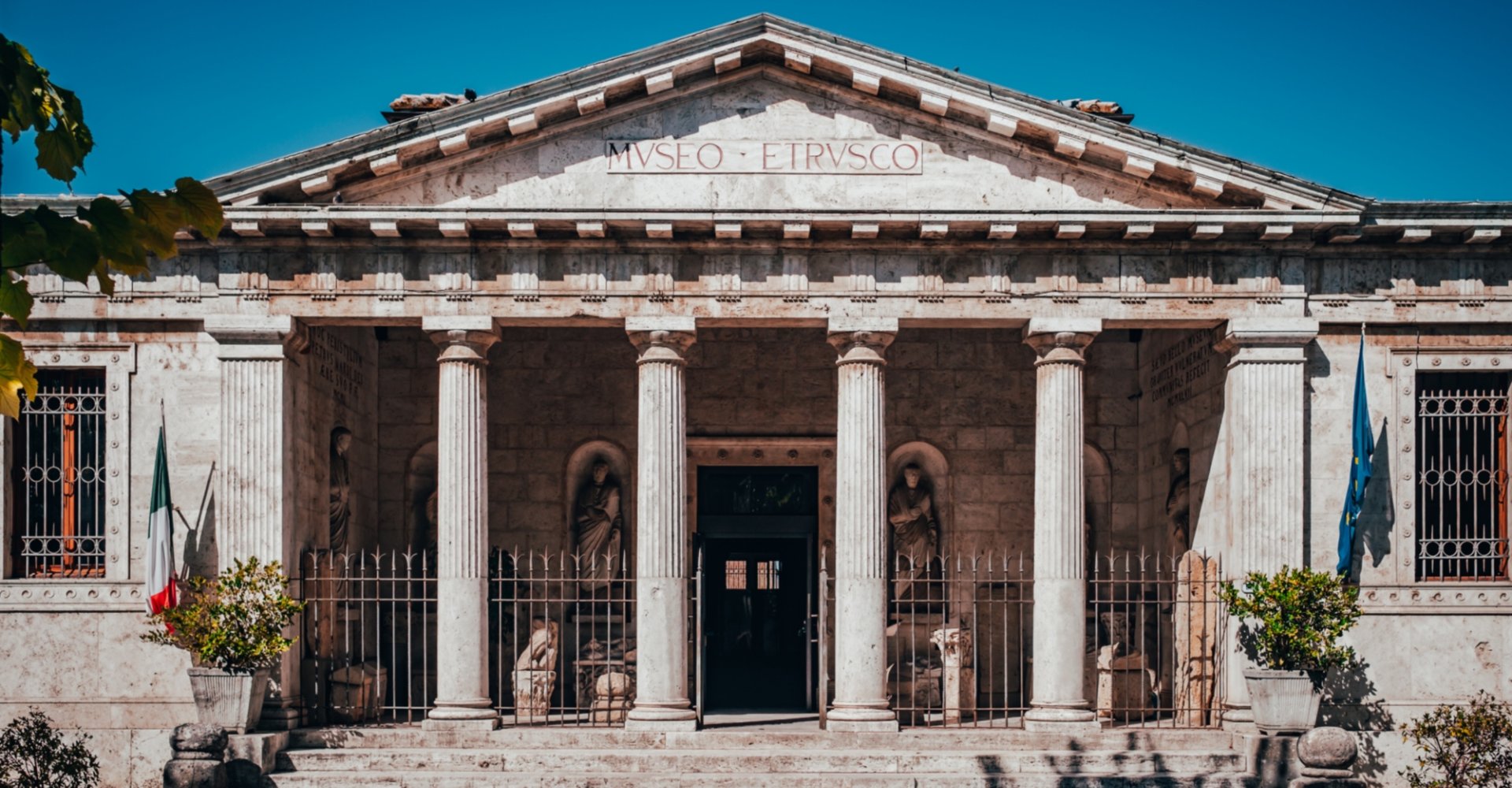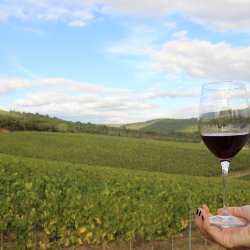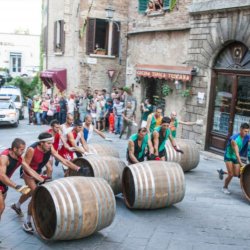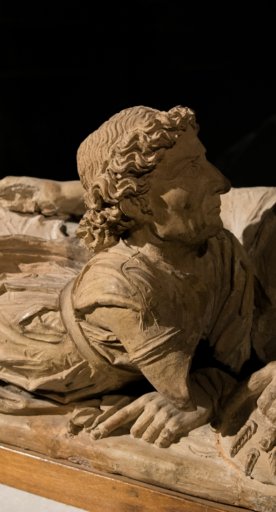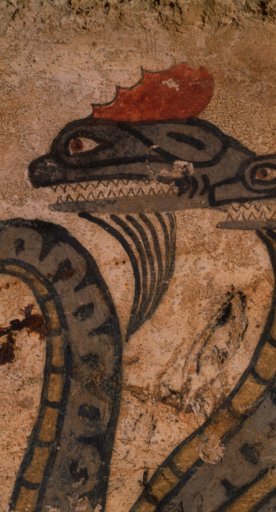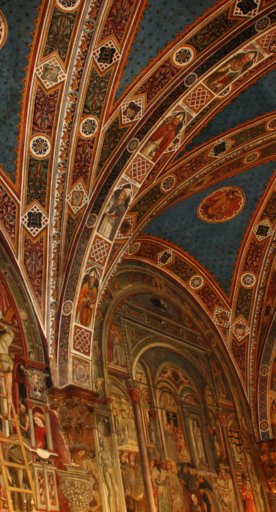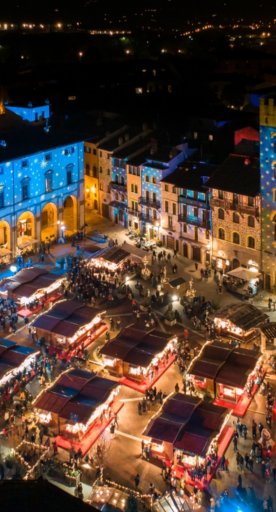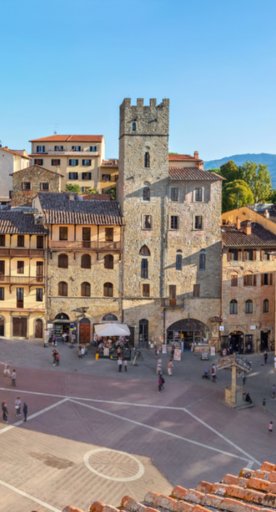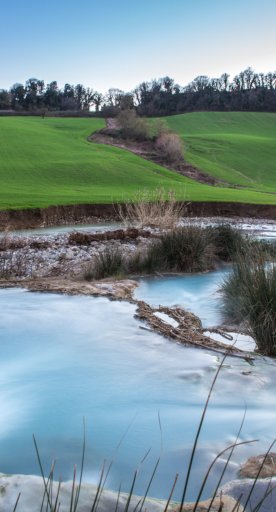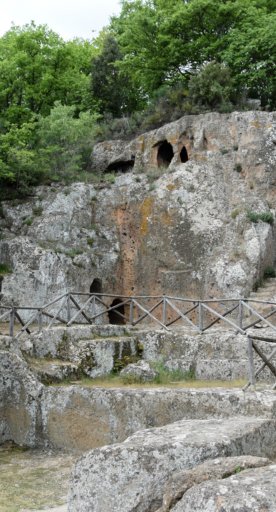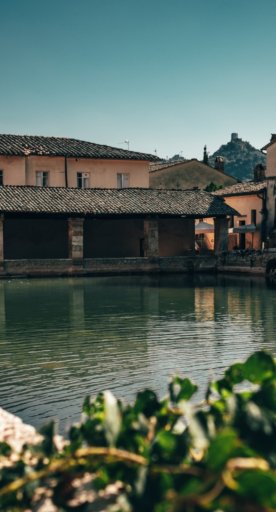10 things that you may not know about the Etruscans
Discover a civilisation that is still shrouded in mystery
For ten centuries, between the 10th and the 1st century BCE, the Etruscans occupied a vast area corresponding to modern-day Tuscany, western Umbria and central to southern Lazio while also pushing into northern and southern Italy. Traces of Etruscan civilisation have, in fact, been found in various areas of Emilia-Romagna, Lombardy, Veneto and Campania. This article presents you with 10 things that you may not know about the Etruscans, a people who everyone has heard of before but who few of us have taken the time to truly discover.
-
1.The mystery of their origins
-
2.Etruria, the biggest iron reserve in all of the western Mediterranean
-
3.Objects from daily life that we still use today
-
4.Etruscan fashion, a source of inspiration for the Romans
-
5.Etruscan women, free and independent
-
6.The Etruscans: a short people
-
7.Etruscan wine: a special recipe
-
8.Vulca, the only artist whose name survives
-
9.The mystery of the Etruscan language
-
10.The end of the Etruscans
The mystery of their origins

Where did the Etruscans come from? After years of speculation-during which it was hypothesized that the Etruscans came from the North, the East or potentially from across the Aegean Sea-today we finally have a reliable answer. Archaeological excavations have shown that the Etruscans descended from the Villanovan civilization, a people that were present in Italy during the Iron Age and that changed its habits following contact with the Greeks who settled in the Italian peninsula in 750 BCE. The interaction between these two cultures most probably gave rise to the Etruscan civilization.
Etruria, the biggest iron reserve in all of the western Mediterranean
The Etruscans possessed the biggest iron reserves in the whole of the western Mediterranean, including the island of Elba, and they had the necessary tools to exploit this precious resource. Archaeologists have, in fact, found huge clay ovens fed with coal and large bellows used to constantly maintain the flames. The discovery of the skeleton of an Etruscan miner in Populonia revealed, however, that the working conditions of the time were terrible: his bones were badly arthritic, deformed by physical trauma and showed signs of a tumour caused by the smoke and fine dust.
Objects from daily life that we still use today

Excavated sites and tombs have revealed lots of objects from the daily life of the Etruscans. Among these, there are objects that we still use today. Archaeologists found a small oven that was supported among the embers of a fire and upon which was placed an earthenware pot, a forefather to gas cooking; a ceremonial umbrella to protect against the sun, from which we take the modern-day design; dozens of coins, among the earliest to be minted and used in Italy and gold false teeth used in Etruscan dentistry, dentistry that was truly ahead of its time. The National Etruscan Museum in Chiusi allows an authentic immersion into the habits and customs of the time. Strolling through its rooms, rich in sculptures, vases, plates, mirrors, jewellery, funeral urns and various utensils, is a good way to understand what the way of life (and death) was like in this rich society.
Etruscan fashion, a source of inspiration for the Romans
In Etruscan society, male clothing was based on two fundamental items: the tunic and the cloak, supplemented with chequered and diamond patterns, with gold and brightly coloured decorations. The Romans took inspiration from Etruscan clothing; the toga seems to be a direct descendant of the “tebenna,” one of the most popular Etruscan cloaks.
Etruscan women, free and independent

Differently to in the Roman and Greek world, Etruscan women spent a great deal of their time outside the domestic environment. Inscriptions that have been discovered tell us some of their names: Velelia, Anthaia, Thania, Larthia,Tita, Nunzinai, Ramutha, Velthura, Thesathei. Free and independent, Etruscan women took part in public life; they could read and they could own commercial operations and property. On a buccaro (a small vessel for food) kept at the Gregorian Etruscan Museum, in the Vatican Museums, we can read for example: “Mi ramuthas kansinaia”, that is “I am Ramutha Kasinai”. The owner of the vase, a woman, is identified here with a first name and a surname. Let us imagine this woman walking elegantly in the streets of ancient Roselle, which nowadays is an important archaeological area in the Municipality of Grosseto. We can imagine her talking to people as they walk from the fountain along the road that leads into the town up to the forum, the centre of the community.
The vases and ampoules found in various tombs-like the Leone, Pellegrina, Scimmia or Colle tomb, all scattered along the road that leads to Lake Chiusi-allow us to understand how the Etruscan nobles wore makeup. We know that their beauty cabinets were well stocked with creams, oils, perfumes, lipstick and eyeshadow. Wealthy Etruscan women made hydrating beauty masks with barley flour, lentils and daffodil bulbs. To make their skin shine, moreover, they used olive oil spread over the body and then removed with a scraper. The lipstick of the time was extracted from marine algae or mulberries and, for the eyes, eyeshadow made from crocus flowers was available. Hair, gathered into long braids and fastened with a ring, could be made more blonde with dye, the use of which has been documented from the era. From the 6th century BCE onwards, the invention of mirrors made of polished bronze meant the Etruscans could see the results of their makeovers.
The Etruscans: a short people
From the bones found in the numerous ancient Etruscan tombs, we know that the Etruscans were a short people: women measured roughly 155cm and men 160cm.
Etruscan wine: a special recipe

In the world of the Etruscans, banquets allowed people to reinforce royal clan links and to show others one’s personal wealth. After a plentiful meal of meat, grain soups and seasonal and dried fruit, the preparation and serving of wine signified the second phase of the banquet. The Etruscan wine recipe would have been, however, a surprise to our palates. This wine was dense like honey, to be mixed with water and flavoured with spices, flowers, vegetable extracts and even…grated cheese! A room in the Rocca di Frassinello cellar in Gavorrano (Grosseto) vaunts some of the necessary objects for the preparation and conservation of Etruscan wine. Among these is a magnificent stamnos that was made and painted in Athens around 480 BCE. It comes from the Etruscan burial ground in San Germano, part of the archaeological area of Rocca di Frassinello.
Vulca, the only artist whose name survives
Although Etruscan art is exhibited in museums all over the world, the makers of these masterpieces remain shrouded in mystery. Consider this, there is only one Etruscan artist who we know the name of: Vulca, a sculptor in the 6th century BCE. According to Pliny the Elder, Vulca worked for the king of Rome Tarquinio Prisco, who commissioned him to make a statue of Jupiter and to make the Sanctuary of Potonaccio in Veii, an ancient Etruscan city, where he made the wonderful Apollo that is kept to this day at the National Etruscan Museum of Villa Giulia in Rome.
The mystery of the Etruscan language

Different from the Greeks and Romans, the Etruscans have not left us poems, annuls, historical accounts or stories. To learn about their language, as many have tried to do, we only have fragments at our disposal. The majority of the 10,000 documents in the Etruscan language that we have, however, are inscriptions that record simply the names of people, objects or the dead. What do we now know about the Etruscan language? Thanks to precious documents like the gold tablet fixed to the temple of Pyrgi, the sentence inscribed on the Cippus Perusinus in Perugia, the famous inscriptions on the Tabula Capuana in Berlin and the Tabula Cortonensis in Cortona, we know that the Etruscans wrote from right to left taking characters from the Greek alphabet. For centuries, Etruscan was the equivalent to English in many regions of Italy because it superimposed the many local languages.
The end of the Etruscans
Why, at a certain point, did the Etruscans disappear forever? Etruscan civilisation ended due to military, economic and social reasons that were in effect throughout its long history. After expelling Tarquinio the Superb, the last king of Etruscan origin in 509 BCE, Rome became an independent republic and, in time, occupied Etruscan lands. In 396 BCE, Veii was destroyed by the Romans, and by around 100 BCE, Etruscan language and writing had disappeared. The Etruscans had not, however, disappeared entirely, neither had anyone wiped them out. Their civilisation progressively changed its language and culture, basing itself in Roman culture. It’s for this reason that today, many of us still have Etruscan blood in our veins.
What’s nearby?

